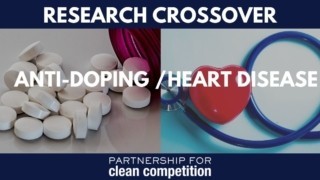The Partnership for Clean Competition funds more than 70% of the world’s anti-doping research, so when it comes to the field, we’ve seen almost everything. However, outside of anti-doping circles, many researchers don’t realize how broad the space truly is—and how their research may apply. We want to shine a light on the breadth of anti-doping work, so we’ve selected a number of areas with potentially surprising crossover.
If you know someone working in one of these realms, let them know there could be anti-doping research funding available for them.
Fighting Anemia with EPO
A team at Amgen, including PCC Scientific Advisory Board Member Dr. Steve Elliott, successfully cloned the erythropoietin (EPO) gene in the early 1980’s and developed manufacturing methods for recombinant human erythropoietin (rHuEPO). The ultimate goal was to develop medications to treat anemia (low red blood cell levels) by stimulating erythropoiesis (the process by which red blood cells are produced) with rHuEPO. Red blood cells contain hemoglobin, a molecule that carries and releases oxygen throughout the body.
By boosting red blood cell production, the team aimed to help cancer patients with chemotherapy-induced anemia and chronic kidney disease patients, who also can suffer from anemia.
Not only did Amgen successfully clone the EPO gene, they also found ways to manufacture and deliver rHuEpo into the body.
However, while the team at Amgen aimed to restore anemic patients to better but still-below-average red blood cell counts, athletes were using the drug to boost red blood cell counts beyond normal, thereby increasing the amount of oxygen delivered to their muscles. These new tools to treat anemia in patients allowed athletes to increase their time-to-exhaustion through illicit and dangerous use of the drug.
Dr. Elliott worked to develop a better EPO that persists longer in the body allowing for less frequent administration, called darbepoetin alfa, but he also worked with officials at the World Anti-Doping Agency to develop testing strategies that could detect the new drug.
In the 2002 Winter Olympics, Dr. Elliott worked with Olympic scientists to confirm multiple positive findings that detected use of darbepoetin. Three cross-country skiers were stripped of their medals and banned for two years.
Cloning the EPO gene and later developing darbepoetin alfa both helped patients with serious health conditions, but they also illustrate an important crossover with anti-doping efforts, showing how the worlds of medicine and sport can overlap in potentially unexpected ways.
If you’re interested in learning more about the anti-doping research we fund, consider reviewing our Research Priorities here.
If you’d like to apply for PCC funding, you can register for an account in the application center here. If you have any questions, feel free to email Michael Pearlmutter at mpearlmutter@cleancompetition.org.




